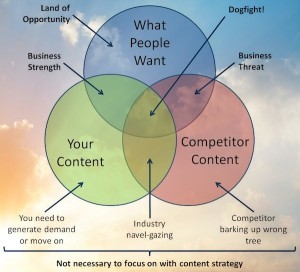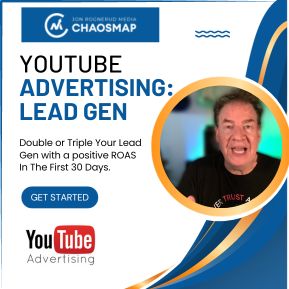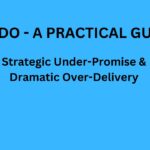Content marketing has become a ‘go to’ option for online businesses in a bid to outdo competition and maximize earning potential and build brand presence.
This certainly sounds appealing and demonstrates its value, but does it always work out as intended? No, and the reason comes down to many enterprises being unable to pinpoint what works and what does not.
Let’s take a look at what is required to have a comprehensive content audit done on the business to ensure things are up to scratch.

The following seven ways are going to guarantee the total content review is completed as required and all details are being assessed prior to tweaks being made. You should not be making changes until everything has been sifted through as required. This is a big part of what is required.
“A content audit is an accounting of all currently published web content and a cornerstone of content strategy”
1) Be Clear On The Site’s Direction
What is the site’s direction (overall goal)? What do you want your existing and new content to actually provide for you? Ultimately, how/where/what will your audience consume?
You have to be willing to have this in mind immediately.
It will guide the audit and ensure you are looking for specific things during the process.
If the goal is to rank better, SEO is going to be heavily playing into all actions taking place.
Are you looking for conversions through the site? This should be taken into account during the audit then.
When you have a direction to focus upon, it will make things that much easier.
The audit requires direction to drive home results and be meaningful.
2) Scan The Site
Begin to scan the site. You can use a manual approach, but make sure to combine that work with tools that spider your site too. You may have forgotten about old content that is ready and ripe for review and re-purpose.
The first time around, don’t start picking out flaws. Just collect, store and then read through and see if there are any severe mistakes – or opportunities you’ve missed.
Some of this content may have been published in the past, but you forgot to read through it as a reader & consumer. This is essential to determine what is good and what is not.
This has to be completed beforehand to ensure the content is relevant, and that the architecture (navigation, access points) flows as nicely as it should. After this is done, you will have an audit trail in hand of what has to be fixed.
Create a checklist of changes – things like new titles, re-write, different format use (for example PDF to HTML) and distribution points.
3) Perform Keyword Research
It is essential to take a look at what keywords have been used in the content and which ones are lacking. Comprehensive keyword research at this stage is important. Often old content will benefit from an ‘upgrade’ in the keyword selection and nomination for use.
The idea is to start working on related keywords that will fit in with the content you have written.
This makes it easier to replace over optimized keywords which have been ‘spammed’ into the content either on purpose or by mistake.
4) Focus On Removal And/Or Rewriting
You will have three options to choose from.
You can leave the content, remove it, or rewrite the parts needing change.
If the content is not relevant now (users, search engines) for certain keywords and topics, you could easily rewrite it and make positive changes. This will help drive traffic in especially if you replace the old keywords with newer ones. Remember, it’s about the reading value and experience also – don’t just think about keywords.
Check for duplicate content in copyscape, one of the tools at your disposal.
The content you leave should suit the direction of the site, be optimized well for keywords in and topics within your niche, and be easily consumed. Also, remember that you may find that existing content could be repurposed into PDFs, Videos, and Audio. Leverage all channels appropriately. Find out what your audience likes, and provide that too.
5) Assess Content Gaps
There are going to be certain ‘content gaps’ you will have to assess during the audit.
You may have content that needs a tighter integration within the topic. These are potentially missed opportunities from the past, or you were not aware of them. Use a tool like Google Keyword Planner (within the Adwords interface) to see what existing and new topical groups might be. Add value within the gaps.
6) Analyze Traffic
Where is the traffic going? What pages are driving in the best results? Which ones are converting the best? Are there correlations between pages that are converting compared to those that aren’t? And, are there pages driving traffic, but the bounce rate is too high?
You should be able to pinpoint all of this information by running a comprehensive web traffic analysis. Patterns will start to develop whether it has to do with incorrect keyword usage and/or poor content.
Whatever the case may be, it is important to determine opportunities and fix them as soon as possible after the audit is completed.
7) Pinpoint Accuracy And/Or Viability Of On-Page SEO Work
When content is being put up for the first time, it is easy to make silly mistakes with regards to on-page SEO (visible and non-visible content/code).
Whether it comes in the form of URLs not using keywords, headlines and HTML tags being over optimized, or the content simply not being written as a user would expect it.
Make sure to assess all of these details during the audit to see which pieces have to be tightened to reap the rewards of on-page SEO.
These seven ways are going to make a substantial difference in the long-run.
The business will be able to maximize its potential with relative ease as long as the content audit is done perfectly. No one is going to get it right the first time around and that is a given.
It takes practice and those who are willing to put in the hard yards are going to get fascinating results. Those who don’t are going to struggle and that is always difficult. Run a content audit as soon as possible to see how things are moving along. The results can often be surprising to those who were not as prepared as they should have been.
Take the information you are getting and make the necessary tweaks to help bolster the business. It is all about paying attention to details and learning from one’s mistakes because everyone is going to make them from time to time.
NEED SOME HELP? Contact Us Here and schedule your time.Jon Rognerud and Chaosmap work with Fortune 500 companies, associations and entrepreneurs to create digital traffic strategies that scale up members, customers, leads and sales with profitable returns. Mr. Rognerud wrote a best-selling book (Buy On Amazon), “The Ultimate Guide To Optimizing Your Website” (Entrepreneur). Connect directly here.







